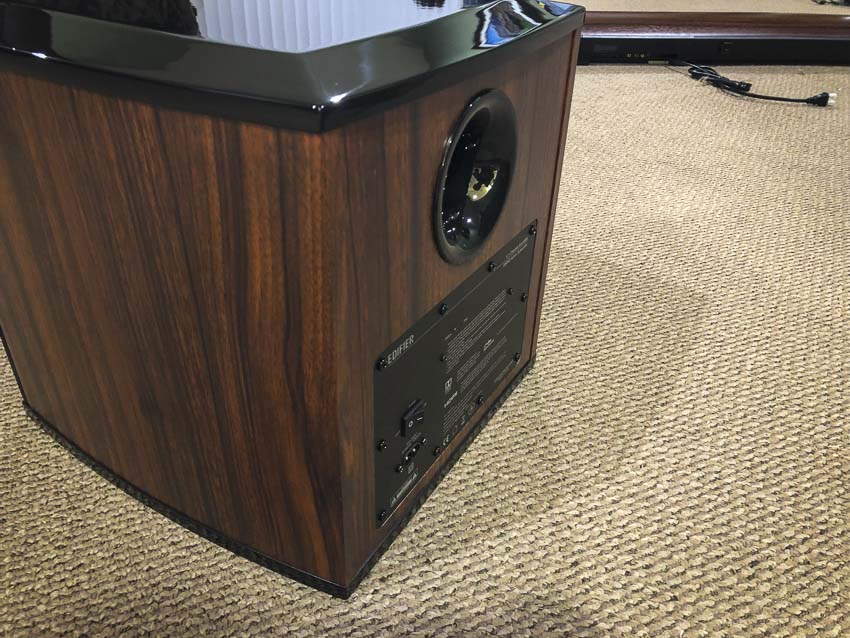QotD: Should I Plug My Speaker Port
Not every room was built with audio in mind. On top of that, very few interior designers ever think about speakers when they decorate a house. Too often, you’ll find speakers pushed up against a wall or into a corner. This is rarely the best location for the speaker and can often be a detriment to good sound. The solution? Some say to plug the speaker port. But should you? What do those holes in your speakers do anyhow?
Answer: Probably not.
Your Speakers’ Ports: What are They and What They Do
A speaker port is simply a hole that allows air in and out of of the interior of the cabinet. In a ported (called a “bass-reflex”) design, the port does double duty. Not only does it allow the air pressure to stay relatively equal as the driver moves in and out, but it also adds bass. All ports make noise of some type. Well-designed ported speakers will take the bass created by the port and use it to reinforce the bass created by the speaker.
But the ports in the speakers have to be well designed. If you took one apart, you’d find that the ports are often fluted, flared, textured, and all sorts of shapes. This is to “tune” the port so that it creates bass at specific frequencies and not just noise.

The Downsides of Speaker Ports
One concern is that ports need room to “breathe.” This means they can’t be placed too close to walls. If they are, the bass can become distorted and boomy. This is from boundary reinforcement. Some speakers are designed with this in mind. These speakers will either be a sealed design (no port) or will have front-facing ports. But the vast majority of ported designs have the port on the back of the speaker. Suddenly, you’re now having to consider giving that speaker between a foot and a meter (depending on who you talk to). That’s just not feasible in many situations. Surely there is a workaround.

Enter the Speaker Port Plug
One of the go-to “solutions” for placing a speaker with a rear port close to a wall is to plug the port. The idea is that if you plug the port of your speaker, the boundary reinforcement won’t happen and your speaker will sound more even. That seems like an easy and relatively cheap solution. Many recommend a sock. The problem is that most ported speakers were not designed with port plugs in mind. Want to know if you speakers were? They’d come with port plugs. If they didn’t, they probably weren’t.
You could call your manufacturer and ask if you can plug the speaker ports, but you’d likely risk voiding your warranty. The fact is that ported speakers were not designed with port plugs in mind. The driver, crossover, and cabinet were not designed with the greater pressures of a sealed design (which is what you’ve created by plugging the ports) in mind. You risk damaging the cone material, melting the voice coil, or other damage.
The Real Solution
If you have limited placement options for your speakers, don’t worry. There are solutions. First, you’ll want to put as much air behind your port as possible. That’s a given. But you can offset the wall proximity by installing some absorptive material behind the port. It shouldn’t be touching the port, but you could get awfully close. Instead of speaker port plugs, the absorptive material will reduce the volume of the sound coming out of the port without blocking the air movement. This will allow the speaker to breathe and protect it while reducing the amount of sound that is coming out of the port.
Conclusion
We all love simple fixes. Add a port plug when you can’t move a speaker away from a wall seems like the simplest of solutions. But it really isn’t the right solution. Call your manufacturer. Ask them what they recommend. They may tell you the placement is fine. They very well might recommend port plugs. But don’t just start adding port plugs because some anonymous poster suggested it was the best thing to do. A phone call, a bit of insulation, and you can properly deal with the near-wall placement of a ported speaker.


